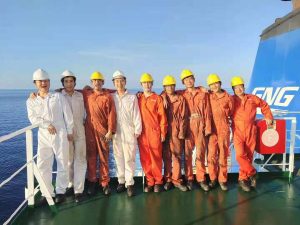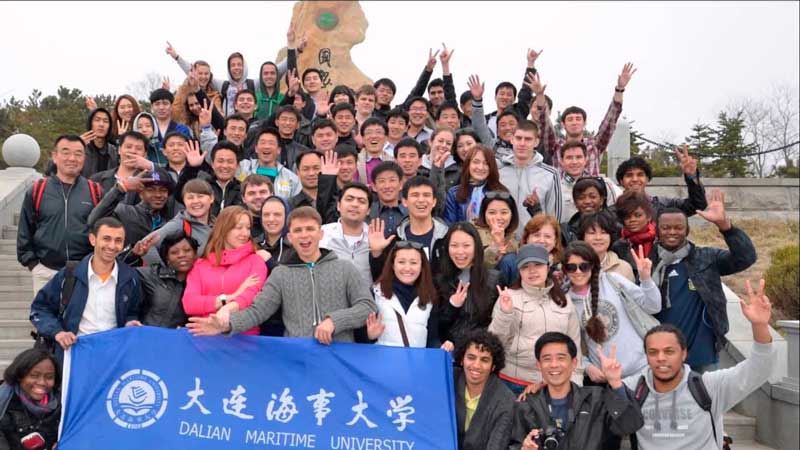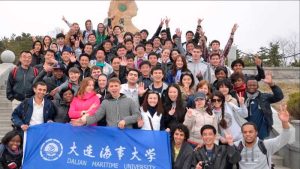Maritime Education in China: Preparing the Next Generation of Seafarers
China, a global maritime powerhouse, recognizes that maintaining its leadership in the maritime sector depends heavily on a well-trained and competent seafarer workforce. Maritime education in China has grown in parallel with the country’s shipping, shipbuilding, and logistics industries, producing thousands of skilled seafarers annually to meet both national and international demand. This article explores the current state of maritime education in China, examining its institutions, training programs, international collaboration, and future prospects.
China boasts several renowned maritime universities and academies, which are instrumental in shaping the future of its maritime workforce. These institutions are responsible for training officers, engineers, logistics professionals, and other maritime-related experts. Some of the top maritime institutions include:
- Dalian Maritime University (DMU): As one of China’s oldest and most prestigious maritime universities, DMU offers comprehensive programs in navigation, engineering, maritime law, and logistics. DMU is a key player in international maritime education and research.
- Shanghai Maritime University (SMU): SMU is known for its specialization in maritime transportation, port management, and logistics. It provides cutting-edge training facilities, including simulators and advanced engineering labs.
- Qingdao Ocean Shipping Mariners College: Specializing in training crew members and officers, this college is a major source of seafarers for China’s shipping industry. Its programs emphasize practical training in line with international standards.
These institutions are supported by a network of other specialized colleges, academies, and research centers, all contributing to a comprehensive maritime education ecosystem.
Training Programs and Curriculum
China’s maritime education system is comprehensive and aligned with international standards. The curriculum at maritime universities and colleges is designed to cover all aspects of seafaring, maritime engineering, ship management, and logistics. The programs typically include:
Nautical Science and Marine Engineering
For students aspiring to become deck officers or marine engineers, programs in nautical science and marine engineering are the foundation. These programs cover key subjects like ship navigation, marine propulsion systems, safety at sea, and environmental regulations. Graduates from these programs are equipped to work on a wide variety of vessels, from bulk carriers to oil tankers.
Port and Shipping Management
China’s booming port and shipping industries have created a high demand for professionals skilled in logistics, operations, and port management. Maritime universities offer specialized programs in shipping economics, supply chain management, and maritime law to prepare students for leadership roles in these areas.
Practical Training
A crucial part of maritime education is practical, hands-on experience. Most institutions have partnerships with shipping companies, allowing cadets to complete mandatory sea-time training. In addition, advanced simulation centers provide students with experience in real-life scenarios, from navigating challenging weather conditions to handling emergencies like oil spills or fires on board.
Many Chinese maritime academies have invested in state-of-the-art simulators, which offer training in ship handling, engine room operations, and port management. These tools enable students to practice skills in a safe, controlled environment, ensuring they are ready for the challenges of seafaring.
Compliance with International Standards
Chinese maritime education programs comply with the International Maritime Organization’s (IMO) Standards of Training, Certification, and Watchkeeping for Seafarers (STCW). This ensures that seafarers trained in China meet global safety and competency standards, making them eligible for employment on international vessels. China is also a signatory to the Maritime Labour Convention (MLC) 2006, which guarantees the rights of seafarers regarding fair wages, safe working conditions, and adequate rest periods. Maritime education programs in China emphasize these standards, ensuring that graduates are not only technically proficient but also aware of their legal rights and obligations.
Technological Integration and Innovation
The Chinese maritime education system is adapting to the rapidly evolving technological landscape in the global maritime industry. As the shipping industry moves toward smart ships, autonomous vessels, and sustainable shipping, Chinese maritime institutions are incorporating courses on new technologies and regulations into their curriculum.
Digital Navigation and Automation : Many programs now include modules on digital navigation tools, automated systems, and artificial intelligence (AI) in shipping operations. For example, students learn to use advanced Electronic Chart Display and Information Systems (ECDIS), automated ship monitoring systems, and cargo handling automation. These technological skills are essential as the industry continues to adopt more automated systems, reducing human error and improving efficiency.
Green Shipping and Environmental Protection: Environmental sustainability is becoming a key focus in maritime education. With growing international pressure to reduce emissions from shipping, Chinese maritime institutions are preparing future seafarers to operate ships powered by alternative fuels, such as LNG, and to implement energy-efficient technologies. Courses on environmental regulations, such as the IMO’s 2020 Sulphur Cap and future decarbonization targets, are mandatory. This ensures that Chinese seafarers are prepared to navigate the complexities of environmental compliance and contribute to greener shipping practices.
International Collaboration and Partnerships
China’s maritime education institutions actively participate in international collaborations, further boosting the global relevance of their programs. Partnerships with leading maritime universities, shipping companies, and research organizations around the world facilitate knowledge exchange and enhance the quality of training. Chinese maritime academies have signed bilateral agreements with foreign institutions, allowing student exchanges, joint research projects, and collaborative training programs. For example, Dalian Maritime University and Shanghai Maritime University have established partnerships with maritime institutions in countries like Norway, Japan, and the United Kingdom.
China’s involvement in international organizations such as the International Maritime Organization (IMO) and the International Maritime Lecturers Association (IMLA) ensures that the country remains at the forefront of maritime education development. Chinese educators regularly participate in IMO meetings and working groups, influencing global maritime policies and training standards.

Growing Seafarer Workforce in China
China’s seafarer workforce is one of the largest and fastest-growing globally, playing a critical role in the country’s maritime dominance. The development of a skilled seafarer base is a strategic priority for China, supporting both its domestic shipping needs and its extensive participation in the global maritime industry. China has emerged as a leading supplier of seafarers, with hundreds of thousands of Chinese seafarers serving on ships worldwide. According to recent estimates, China supplies over 240,000 seafarers annually, including officers and ratings (crew members), making it a top provider along with countries like the Philippines and India. Chinese seafarers work on a variety of vessels, including cargo ships, oil tankers, bulk carriers, container ships, and cruise ships.
STCW Compliance and Seafarer Training and Education
The Chinese government has made significant investments in maritime education and training, ensuring that its seafarers meet international standards. China is home to several prestigious maritime academies, including:
- Dalian Maritime University
- Shanghai Maritime University
- Qingdao Ocean Shipping Mariners College
These institutions offer comprehensive training programs that cover everything from navigation and engineering to safety and environmental regulations. Training is aligned with the STCW Convention (Standards of Training, Certification, and Watchkeeping for Seafarers), an international framework that sets the qualifications for seafarers. Students receive both theoretical knowledge and practical training, often through simulation facilities and onboard training programs. Some of the top universities also collaborate with shipping companies and international organizations to ensure that cadets are exposed to the latest technology and industry practices.
Chinese seafarers are well-regarded for their professionalism, competence, and adherence to international maritime standards. The STCW Convention, which governs the certification and training of seafarers globally, is rigorously implemented in China. This ensures that Chinese seafarers are qualified to work on international ships and that they meet the necessary standards for safety, navigation, engineering, and environmental protection. China has also ratified the Maritime Labour Convention (MLC) 2006, which sets out the rights of seafarers and ensures that working conditions on ships are safe and fair. As a result, Chinese seafarers are protected by laws that guarantee fair wages, rest periods, safe accommodations, and access to medical care while at sea.
Technological Adaptation and Continuous Training
As the maritime industry becomes more technologically advanced, China is preparing its seafarers to adapt to new challenges. This includes training in areas such as digital navigation, automation, and environmental sustainability. Chinese maritime academies are increasingly incorporating modules on the use of digital tools, smart shipping technologies, and compliance with environmental regulations like the IMO’s sulfur cap. Continuous training programs are offered to ensure that seafarers keep up with evolving regulations and technological advancements. Seafarers are required to attend refresher courses, particularly in areas such as safety management, anti-pollution measures, and advanced shipboard equipment operations.
Career Opportunities, Challenges and Opportunities
With China’s growing dominance in the global shipping industry, there is an increasing demand for highly skilled Chinese seafarers. They are employed not only by domestic shipping giants like China COSCO Shipping Corporation and China Merchants Group, but also by many international companies, especially in Europe, Asia, and Africa. The demand for Chinese officers, particularly in senior roles such as captains, chief engineers, and chief officers, is rising. As China continues to expand its fleet and modernize its shipping operations, career prospects for seafarers are expected to grow, offering opportunities for promotion and long-term career development.
While the growth in the seafaring workforce is promising, challenges remain. The physically demanding nature of seafaring, long periods away from home, and the risks associated with piracy and harsh weather conditions can make recruitment difficult. Moreover, as the industry moves toward greater automation, some seafarers may face difficulties in adapting to advanced technological systems. To address these issues, Chinese maritime training institutions are placing a greater emphasis on soft skills, mental health awareness, and adapting to technological changes. Additionally, efforts are being made to improve the quality of life on board, such as providing better communication tools to stay connected with family while at sea and ensuring compliance with labor rights under the MLC 2006. Though traditionally male-dominated, China’s maritime industry has seen an increasing number of women joining the seafaring workforce. Chinese maritime academies are opening more opportunities for women, encouraging them to pursue careers in various roles onboard. However, gender representation is still low compared to other professions, and efforts are being made to promote diversity and inclusiveness within the sector.
Challenges and Future Outlook
While China’s maritime education system is highly advanced, it still faces several challenges. One ongoing issue is attracting and retaining talent in a field that is often associated with long periods away from home and harsh working conditions. Additionally, the rapid pace of technological advancement means that maritime educators must continuously update their curricula to ensure students are equipped with the latest skills. However, the future looks bright for maritime education in China. With increasing demand for skilled seafarers and maritime professionals in both domestic and international markets, China’s maritime institutions are well-positioned to grow. The country’s ongoing investments in infrastructure, technology, and international partnerships will continue to enhance the quality of maritime education.
China’s maritime education system is a key driver behind its success in the global shipping industry. Through world-class institutions, cutting-edge technology, and adherence to international standards, China is preparing the next generation of seafarers and maritime professionals to meet the challenges of an increasingly complex and competitive industry. As China continues to play a pivotal role in global trade and shipping, the importance of its maritime education sector will only grow. By staying at the forefront of technological innovation and international collaboration, China’s maritime academies will ensure that their graduates are equipped with the skills, knowledge, and expertise needed to excel in the dynamic and evolving maritime landscape.
The future of Chinese seafarers looks promising as the country continues to invest in maritime education, enhance training facilities, and maintain high international standards. With the growing focus on green shipping, smart ships, and autonomous vessels, Chinese seafarers are expected to be at the forefront of these technological shifts. Additionally, as China solidifies its position as a maritime superpower, the demand for highly skilled seafarers will increase, providing opportunities for growth and leadership roles in the global shipping industry.




new experience!
thank you.
Indeed the potential of Chinese maritime education and seafarers training are not globally recognised well!